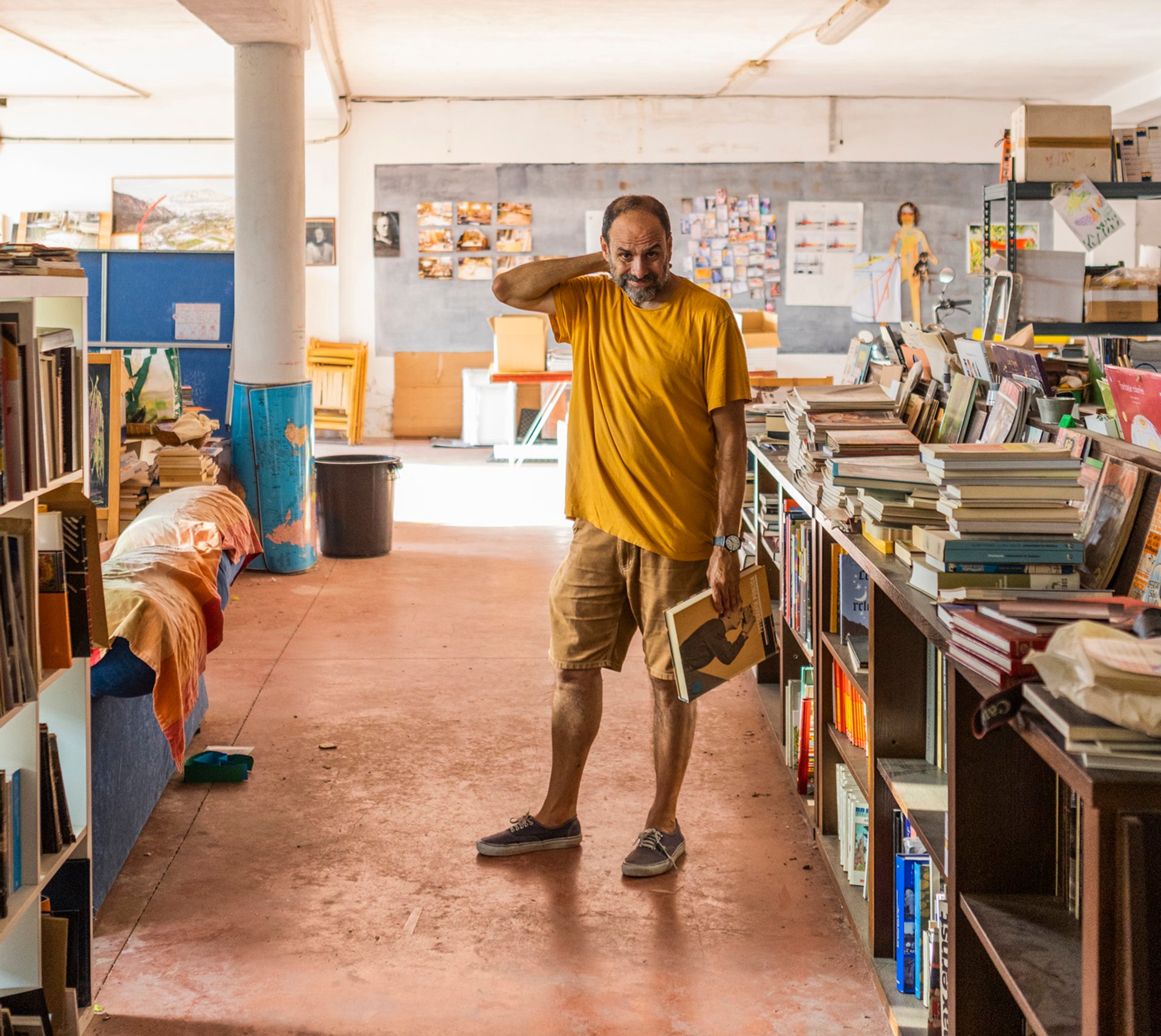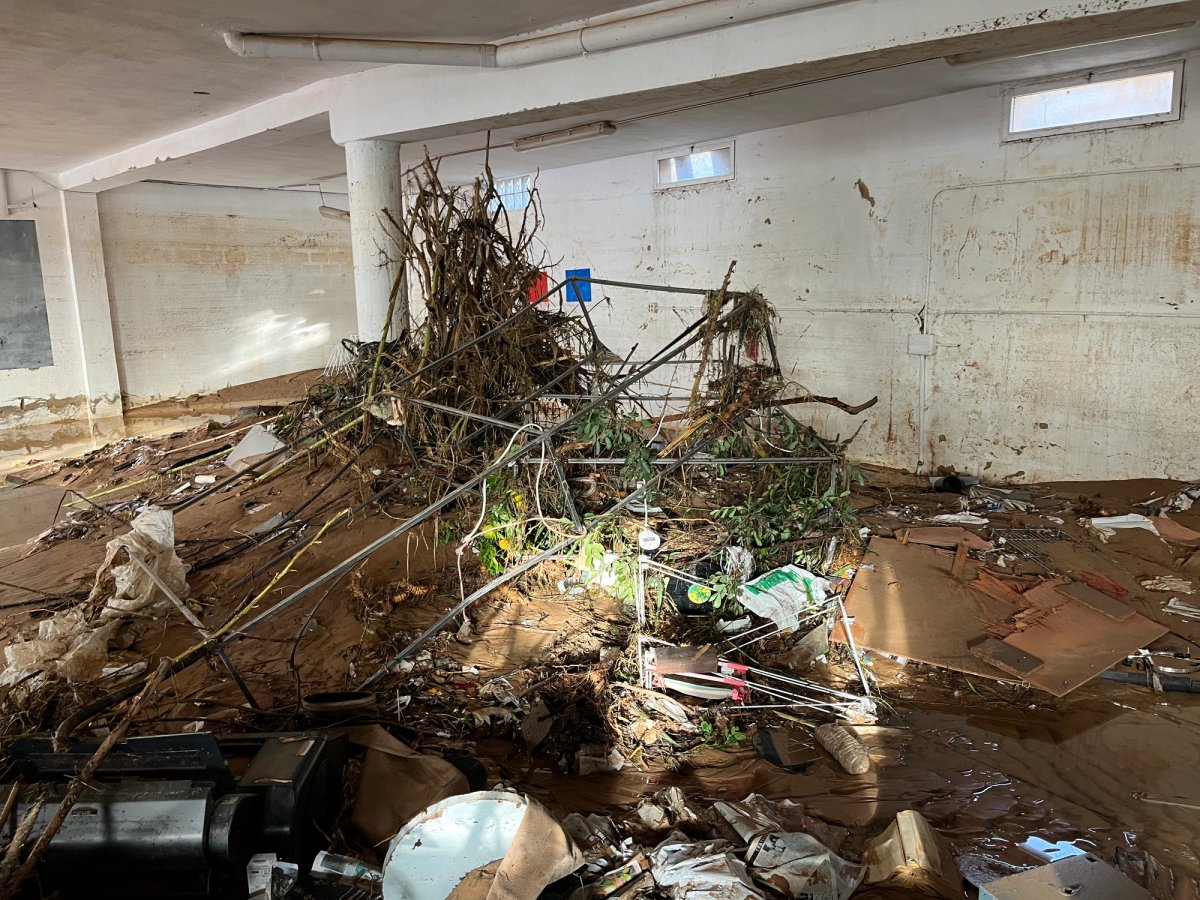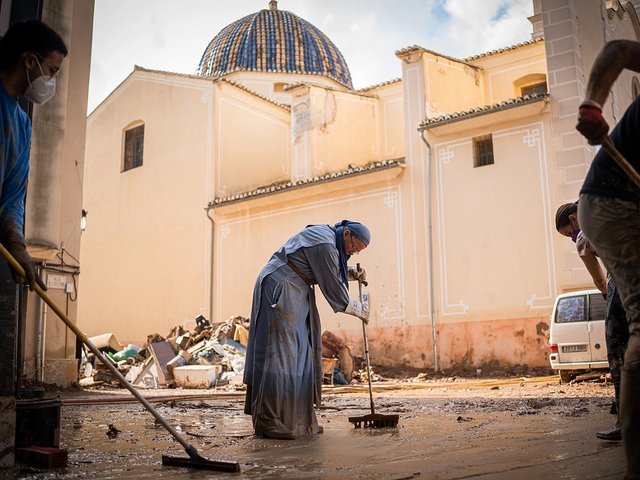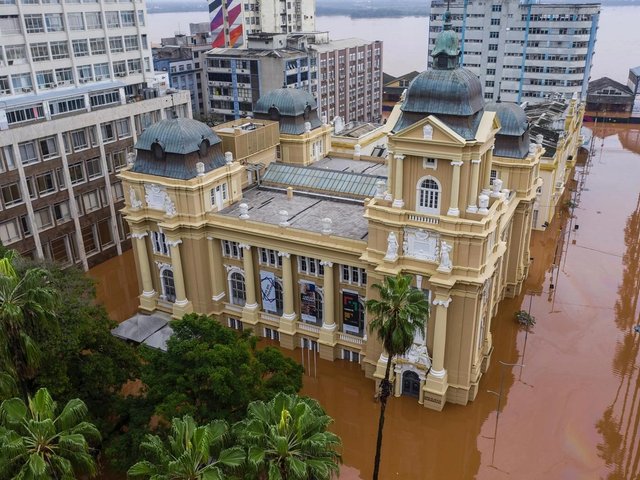A Spanish artist’s studio has been devastated by last week’s catastrophic flash floods, which ripped through the country’s eastern regions, killing more than 200 people and destroying millions of euros worth of property and infrastructure in their wake.
Ricardo Cases, who lives and works close to the town of Torrent on the western edge of Valencia, escaped the floods, but lost much of his work after his studio was wrecked, and his books and photographs washed away.
“We live in the countryside in an area with several ravines, and my house is on the edge of one,” he tells The Art Newspaper.“It looks like a different place now.” His nearby, ground-floor studio, which he has shared with his brother-in-law, a bookseller, for the past six years, used to be a carpentry workshop. Now, it’s a mess, “flooded to the roof”. Yet he knows he’s lucky. “The houses next door have been wiped out by the water.”
Nonetheless, the destruction is immense. “I used it to store all the exhibitions I have produced,” says the 53-year-old, “to give classes, to store my book collection, to work on the editions of my books, to produce the limited-edition fanzines that I have been publishing for years. It was also a place for my daughter to play, a place to enjoy work. For me, my studio is a kind of amusement park, a place of stimulation.”
Cases is one of the leading figures among an acclaimed generation of Spanish photographers to emerge in the wake of the financial crisis of 2008. He joined the influential Blank Paper collective in 2006, and has published 11 photobooks to date. Cases has exhibited at Musée Nicéphore Niépce in France and Canal Isabel II in Madrid, and is represented by galleries in Spain, France, Switzerland and the US. In 2017 he was the recipient of a Cultura Comunidad de Madrid Award.
The floods began suddenly on 29 October following a deluge in which, in the area where Cases lives, more than a year’s worth of rain fell in just eight hours. “We were at home with the children because there were predictions of heavy rain and they didn't go to school. In the afternoon, my wife looked out of the window and saw that the ravine had filled with water, reaching up to our house, so she called us all to quickly leave by car. As we passed by the street where my studio was, I saw the violence of the flood waters, which had covered everything.
The floods were set off by a phenomenon known locally as a DANA, a Spanish acronym for a high-altitude isolated depression (Depresión Aislada en Niveles Altos) in which cold and warm air meet and produce powerful rain clouds resulting in torrential rain, large hail storms and tornadoes, as seen last week across the Valencia region.
“The next day I returned to the studio and there was only our van, which was destroyed, and a metre of mud mixed with a mass of remains of books and frames. But 90% of everything was washed away.
Cases is a prolific maker of books, often using surprising formats and cutouts, and many of his exhibitions use complex framing to create intertwined installations. “The losses are 100 percent. All I had was paper. I have lost all the exhibitions I have produced since I started with photography. All the prototypes of the books I have published, Paloma al aire [his breakthrough project, published by Dewi Lewis in 2011, which brought him to international attention], el porqué de las naranjas (Mack, 2014), Estudio elemental del Levante (Dalpine/torch press/The Ice Plant, 2020)... In my case, all this is a problem because I experiment a lot: testing, putting ideas on paper before publishing or exhibiting.”

Cases says he has lost all of the experimental books at his studio, which were central to his practice
© María Mira
Cases has been working on an exhibition of new work, opening next month at Kutxa Kultur Arteguena in Tabakalera, the International Centre of Contemporary Culture in San Sebastian. “Half of the production was in my studio,” he says. “I am very lucky because the Kutxa Foundation has decided to produce it again.” And, thankfully, he stored his hard drives of images elsewhere.
Meanwhile, Sonia Berger, a Madrid-based curator who founded Dalpine, an independent publishing company that has produced several books by Cases, has launched a print sale to raise funds for the artist. “We are committed to helping Ricardo rebuild and continue creating his inspiring work as soon as possible,” she says. “All proceeds from sales, after bank fees, will go directly to Ricardo to support his recovery.”




